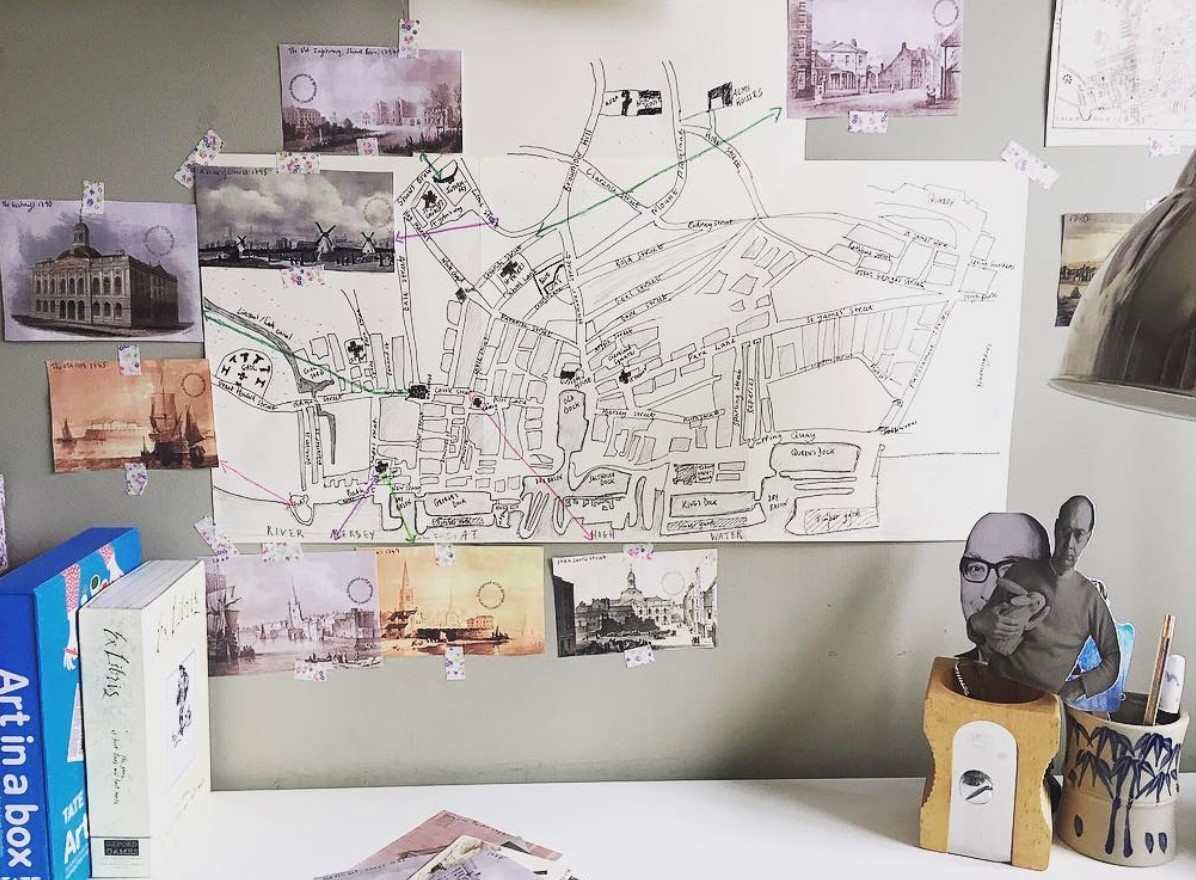How do you navigate historical settings? Author Nicola Edwards shares how she maps her story.

Navigating a setting in historical fiction is both a joy and a challenge, particularly when the topography of this setting is unrecognisable from the period in which your novel is set. Much of my novel takes place in 18th century Liverpool, which bears no resemblance to the cosmopolitan city that now attracts tourists and shoppers. The Old Dock, built in 1715, was Britain’s first wet dock and was admired widely for its innovation and functionality. It is now buried beneath John Lewis.
If the historical detail that underpins your work has been modified, demolished, or buried, how does a writer begin to steer their characters along these sunken, long-forgotten streets? How can those characters inhabit buildings that no longer stand?
This is a conundrum for all historical novelists; a problem I picked my way through blindly to begin with. As I attempted to pilot my characters along streets I couldn’t imagine, manoeuvre them into spaces that no longer exist, I knew I needed something more concrete, more tangible. I decided to draw a map: not as Liverpool is now, but as it was in 1780. Daniel Defoe, R. L. Stevenson, James Joyce, and Beryl Bainbridge all used maps to plot the path of their characters, so I was in good company.

I began with the dock area, before spreading beyond the main streets to the hills above Liverpool, to the workhouse and the alms houses and the windmills. I stuck the map to the wall above my desk, and as I added more and more detail, my writing room was transformed into a novice cartographer’s workshop. I found artists’ depictions of the lost buildings that would feature in my novel and added them to my display. I drew arrows indicating the location of those long-gone premises and mapped the best routes to the gaol, to the Old Dock, and to the Georgian townhouses of Hanover Street where the wealthiest merchants lived. With 18th century Liverpool spread out before me, I was ready to begin writing in earnest.
Malcolm Bradbury observes in his Atlas of Literature that ‘a very large part of our writing is a story of its roots in a place: a landscape, region, village, city, nation or continent’. In other words, the spatial dimensions of fiction dictate not merely the characters, but the narrative itself. Mapping a historical setting and plotting your characters’ paths along visual lines is therefore the first step in not only building a convincing world, but also in structuring plot, developing character arcs, and deciding, ultimately, when to push your protagonist off the edge of the map entirely.
This Thing of Darkness by Nicola Edwards is published by Aderyn Press in paperback and is available to purchase from your local bookshop. Nicola Edwards is a PhD candidate at the University of Bangor and teaches English and Classics in a school in North Wales. Nicola has worked as a journalist and has lectured on race and representation in the media for Race Council Wales. Her non-fiction writing has appeared in Wales Arts Review. This Thing of Darkness, her first novel, won the Michael Schmidt Prize at the Manchester Writing School. Follow Nicola on Twitter or head to her website.
Comments